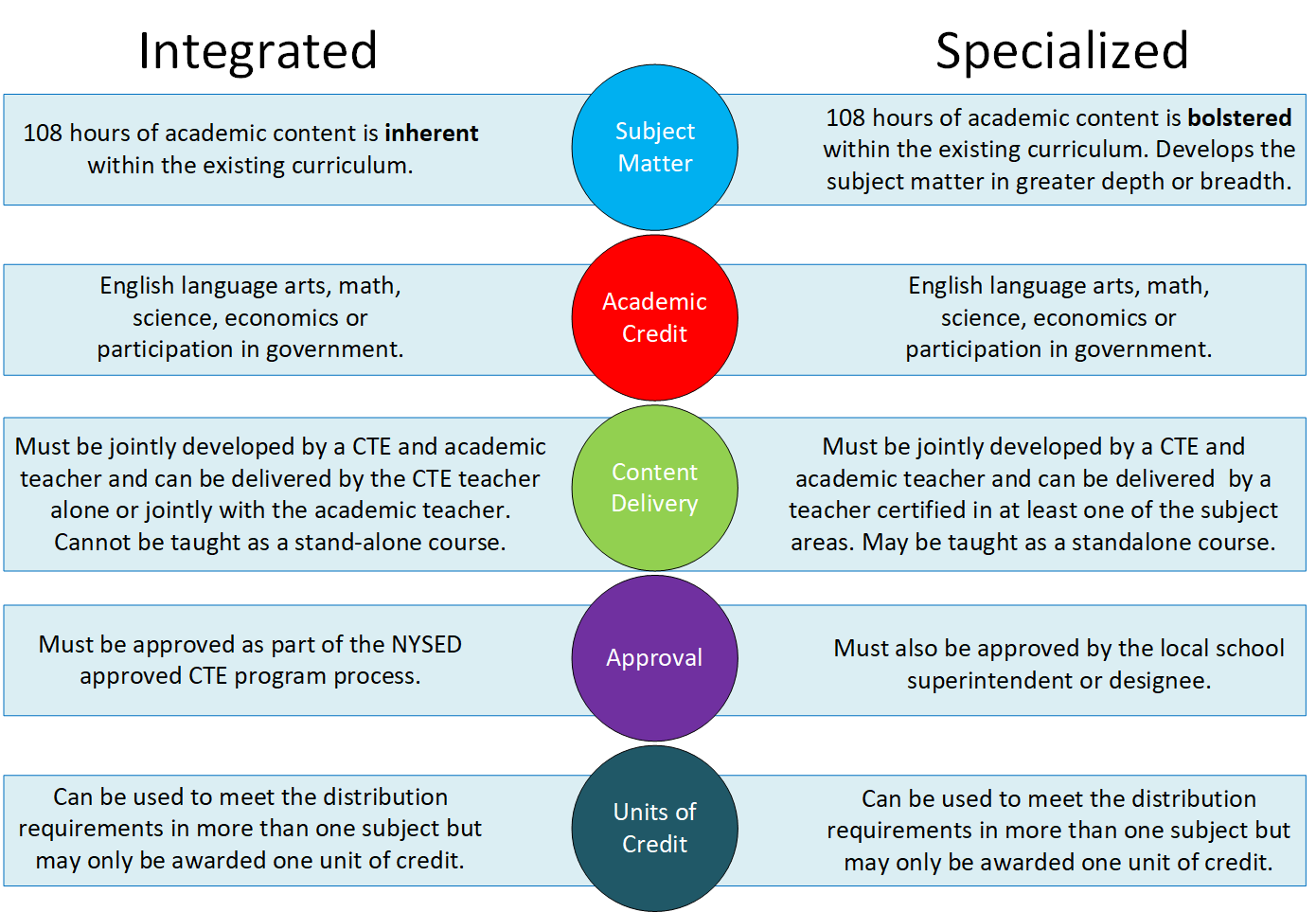Integrated and Specialized Academics
Integrated CourseworkCR100.5 (d)(6)(i)(a) An integrated career and technical education course shall mean a course that combines career and technical education and academic commencement level learning standards and may be jointly developed and taught by an academic subject teacher and/or a career and technical education teacher. Successful completion of one unit of study in an integrated career and technical education course may be awarded only one unit of credit but may be used to meet the distribution requirements in more than one subject. |
|
Specialized CourseworkCR100.5 (b)(7)(iv) A specialized course is a course that meets the requirements of a unit of credit as defined in section 100.1(a) of this Part and the New York State commencement-level learning standards as established by the commissioner. A specialized course develops the subject in greater depth and/or breadth and/or may be interdisciplinary. Successful completion of one unit of study in an interdisciplinary specialized course may be awarded only one unit of credit but may be used to meet the distribution requirements in more than one subject. In a public high school, an interdisciplinary specialized course shall be taught by a teacher certified in at least one of the subjects. |
|
A Comparison of Integrated and Specialized Coursework

The graphic above compares the differences between integrated and specialized coursework including the characteristics of what they look like in practice.
The key difference is not as much in what content exists but how it exists. In an integrated course, a student must know the commencement level academic content in order to learn the CTE content. In a specialized course, the academic content is not inherently there but is bolstered so that 108 hours of academics can be provided in the program.
Information on current commencement level academic standards for ELA, math, science, and social studies can be found on the Office of Curriculum and Instruction web page.
Example 1: An engineering program may seek approval for integrated ELA, math, and science credit as students need to learn commencement level standards in all three of these academic areas in order to learn the engineering content of the CTE program.
Example 2: An information technology (IT) program may seek approval for specialized mathematics as the information technology program does not inherently include commencement level mathematics content. To meet commencement level requirements for math in this example, a school would bolster the mathematics content within the program.
Note: These examples are being given to help define the difference between integrated and specialized credit. Each program application that is received is individually evaluated for the appropriateness of integrated or specialized credit therefore not all engineering or IT programs may qualify as described in the example.
Templates
To provide additional assistance to the field, the Office of CTE and the Office of Curriculum and Instruction have developed math and science crosswalk templates that can be used for documenting integrated and/or specialized math and science within CTE programs. These templates are an optional resource and are not required for program approval or re-approval. Since the use of these templates is optional, schools can continue to use past methods or software that have been effective for crosswalk development (e.g., Atlas, Excel, word document tables, etc.). The templates below were developed to provide assistance to applicants who have not found an effective way to document integrated and specialized academics and for others that may be looking for new ideas or approaches to documenting this information. These templates are an optional resource—not a requirement.





